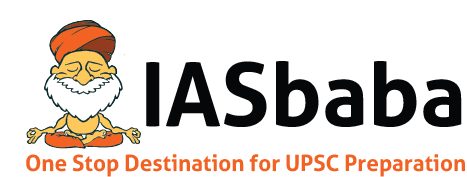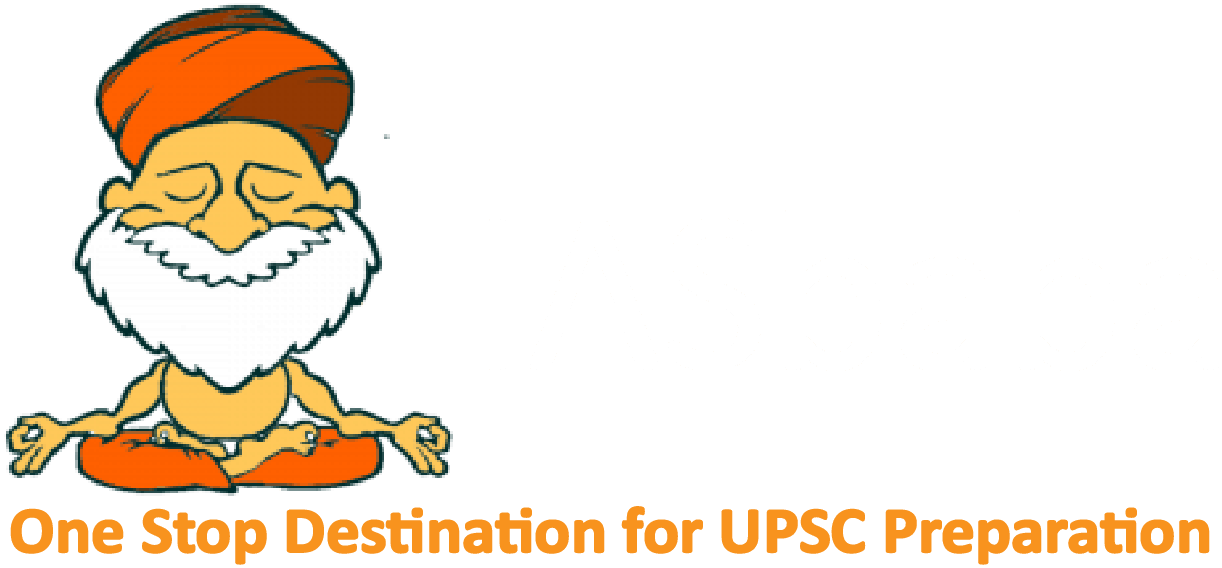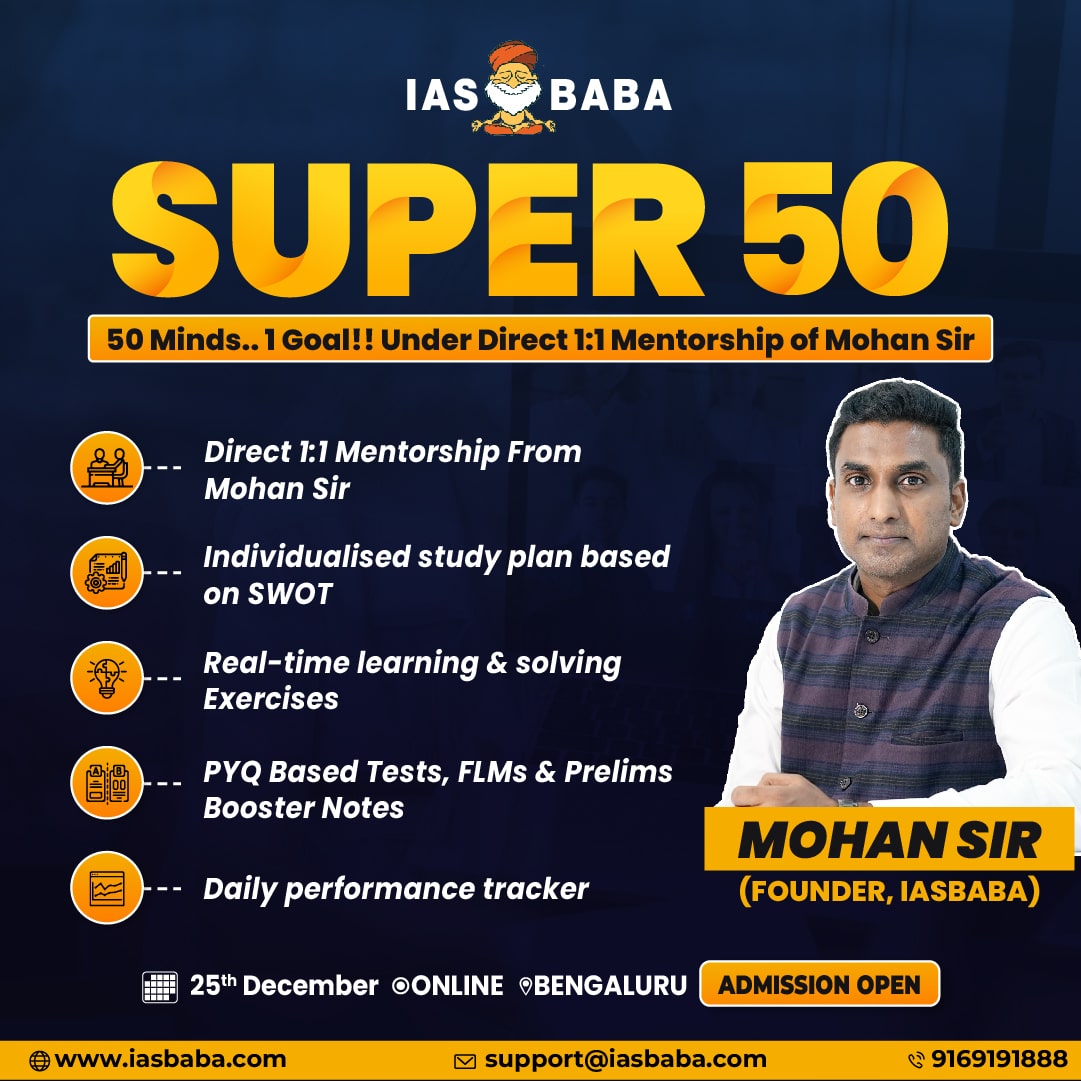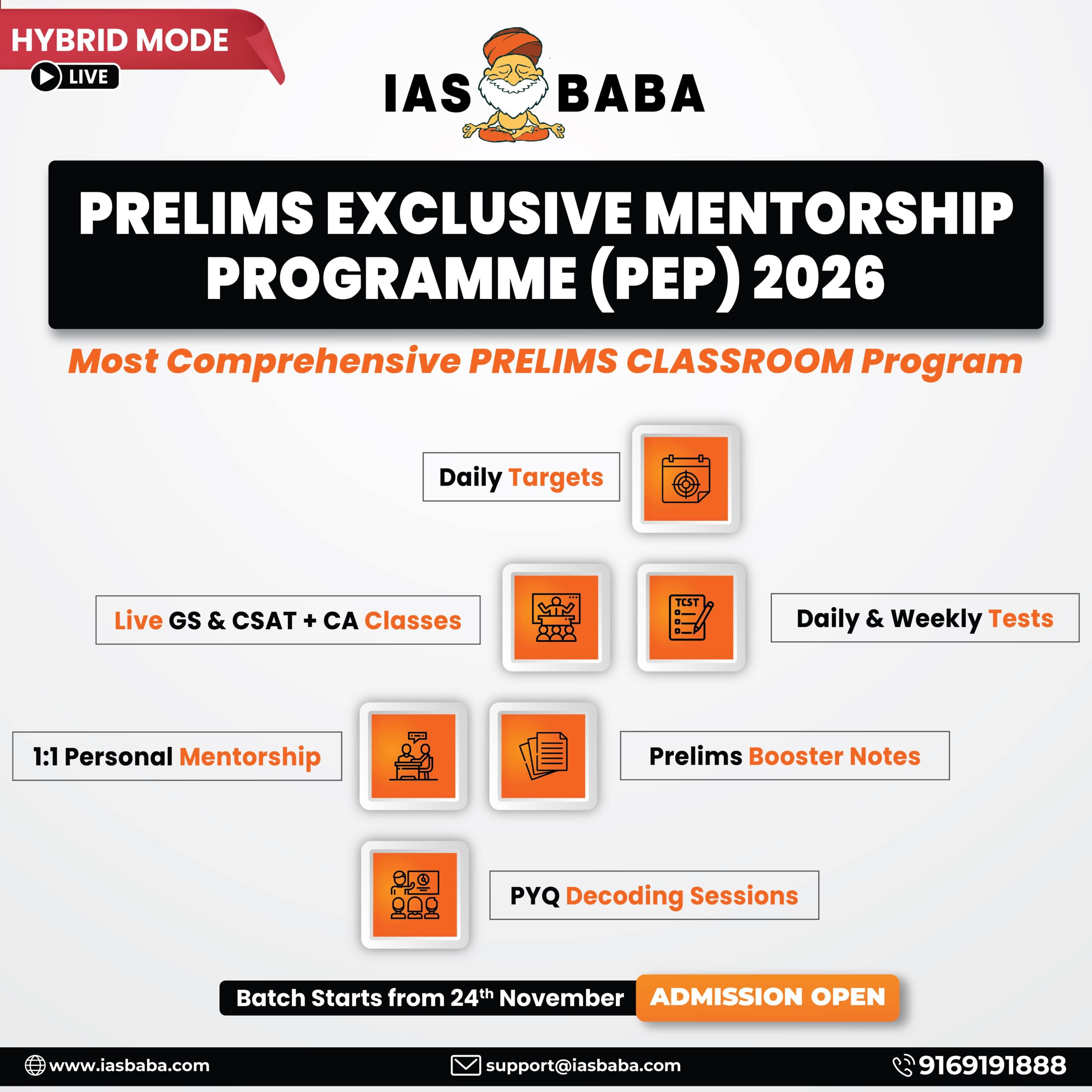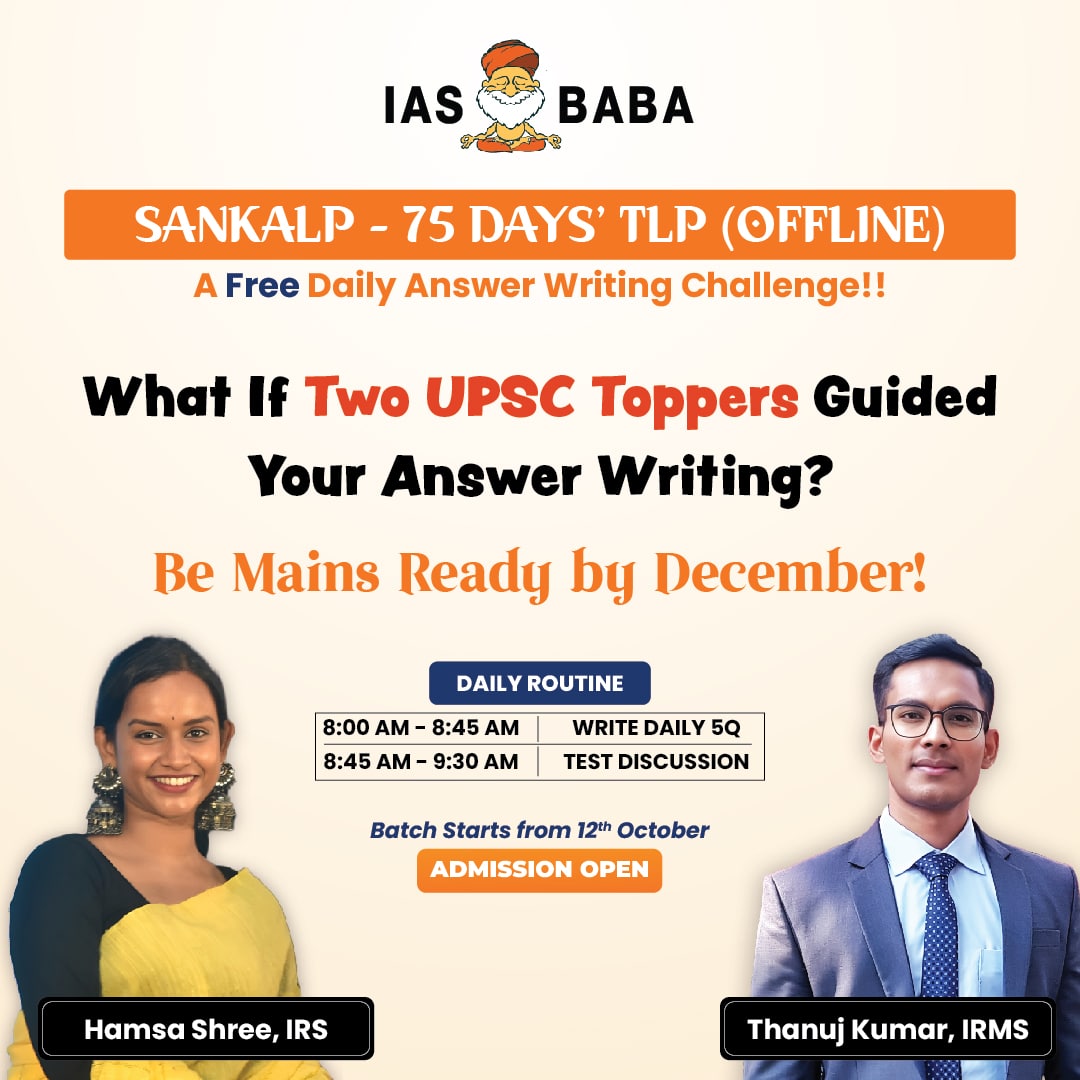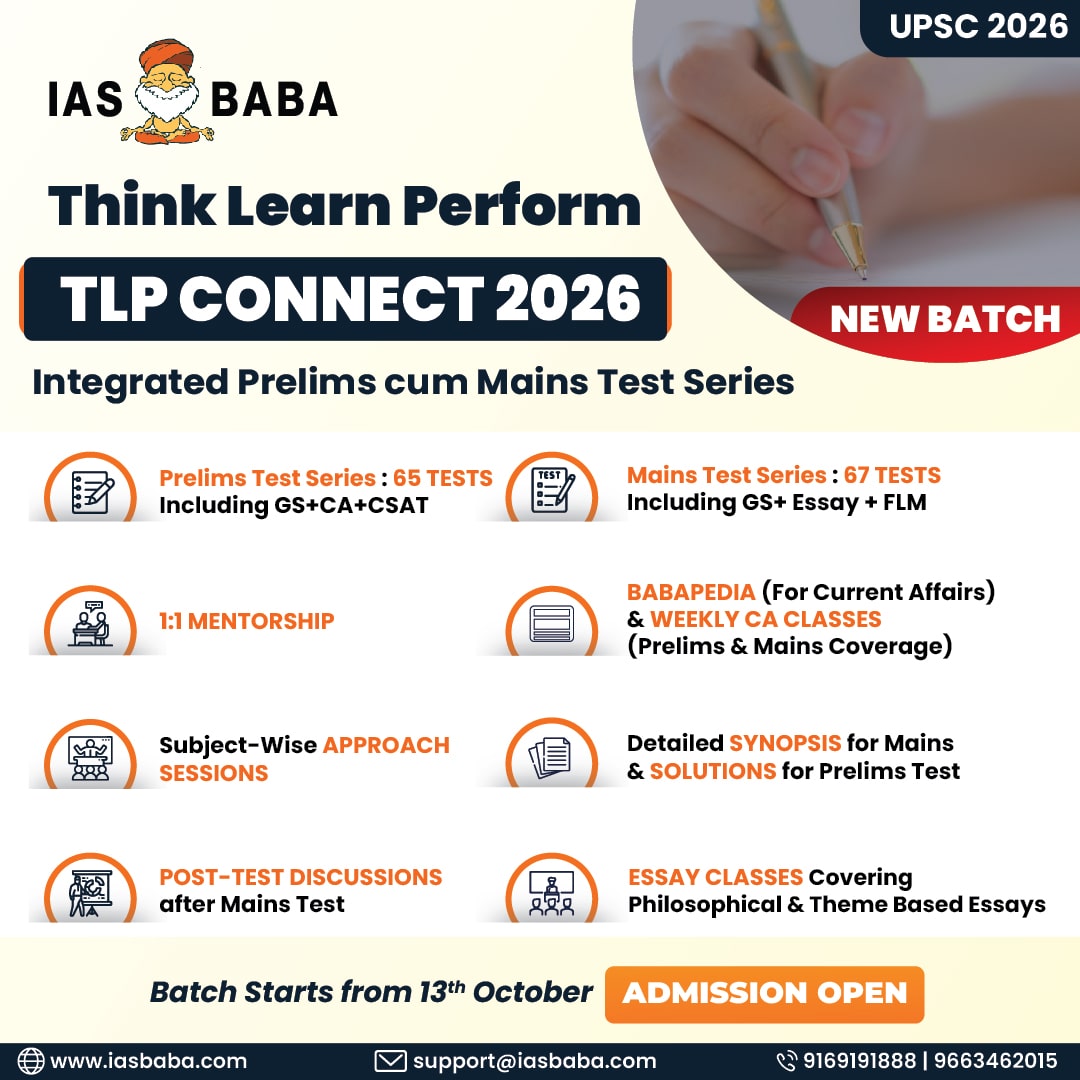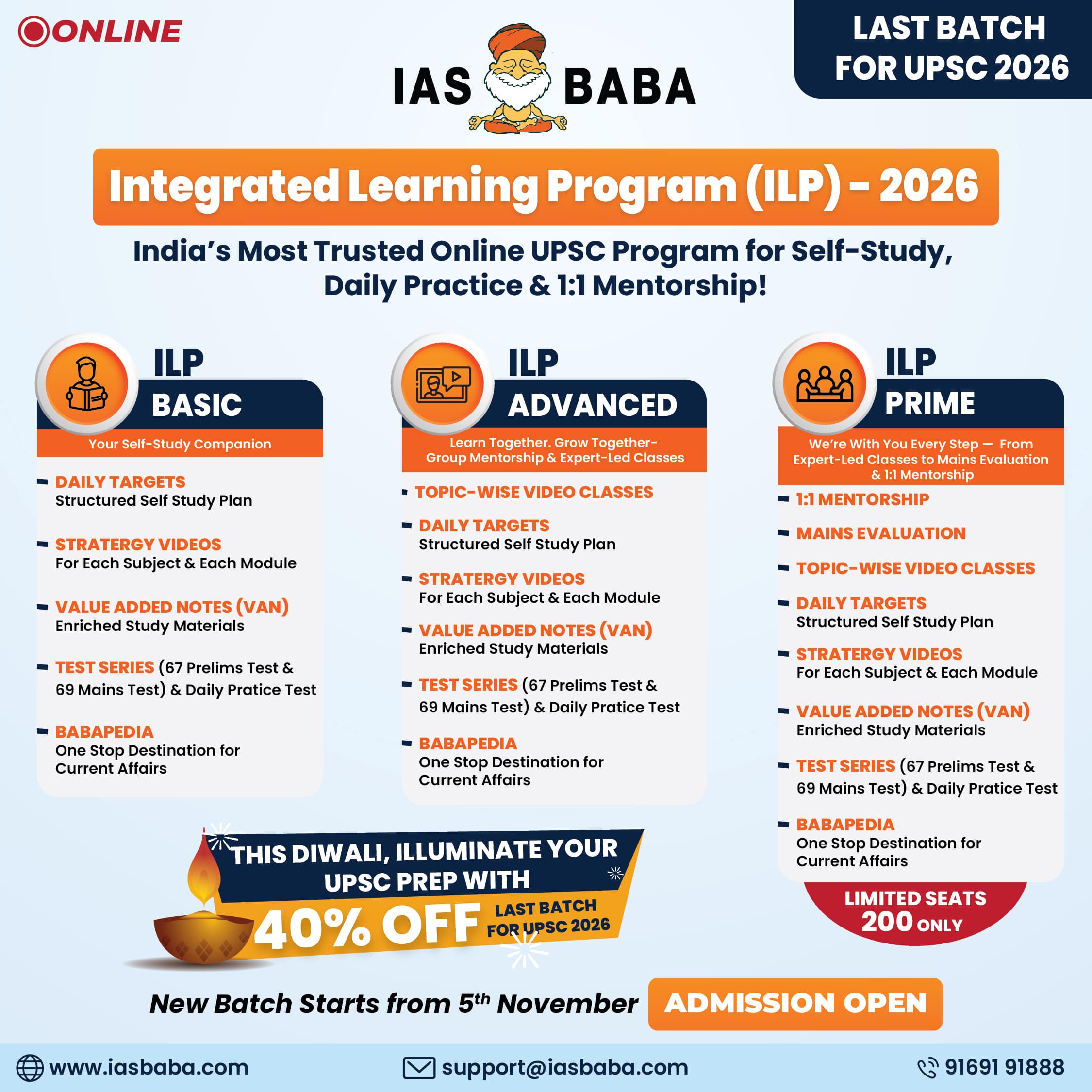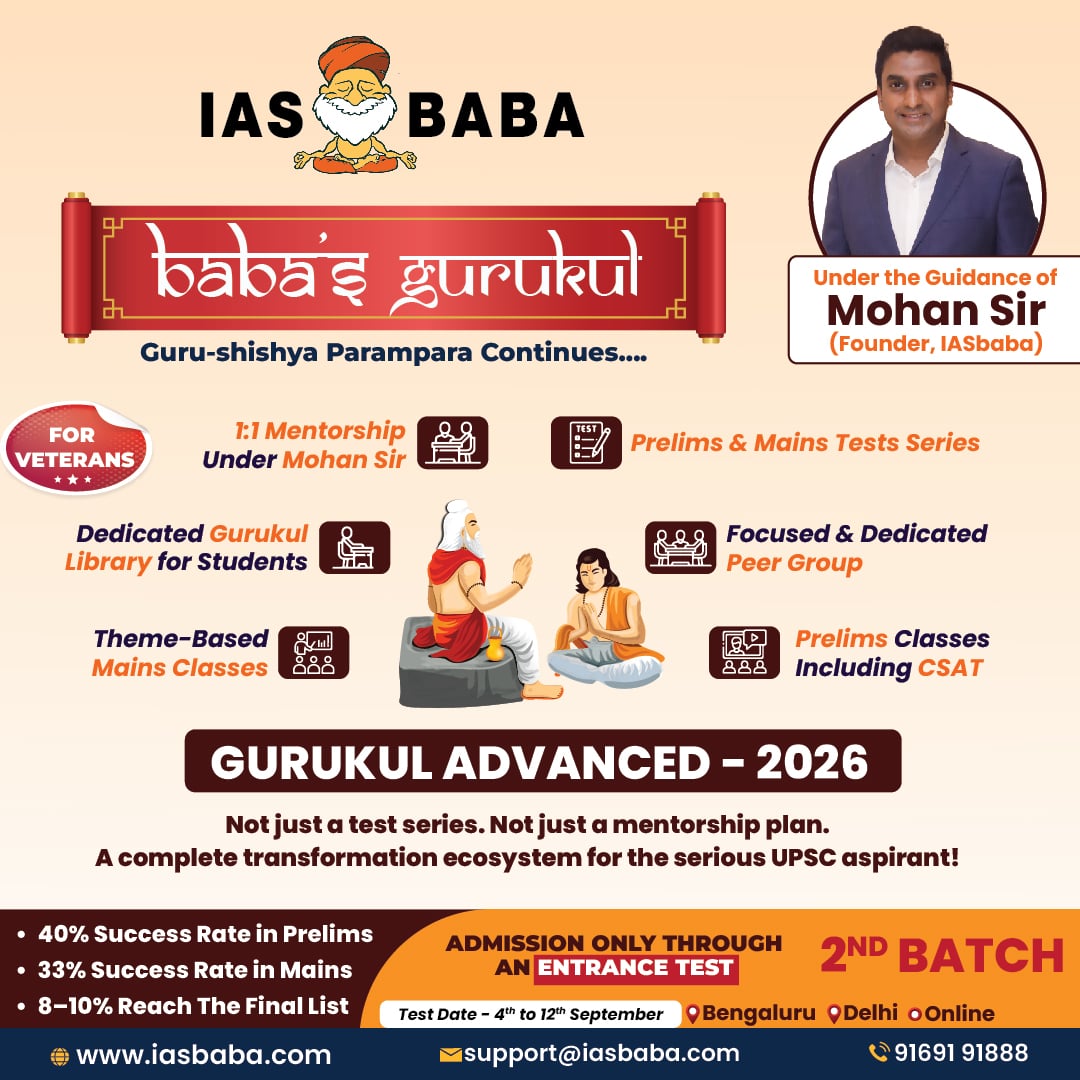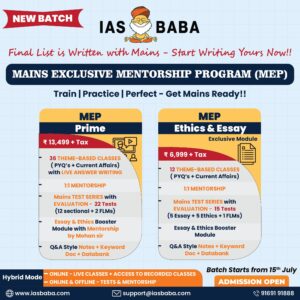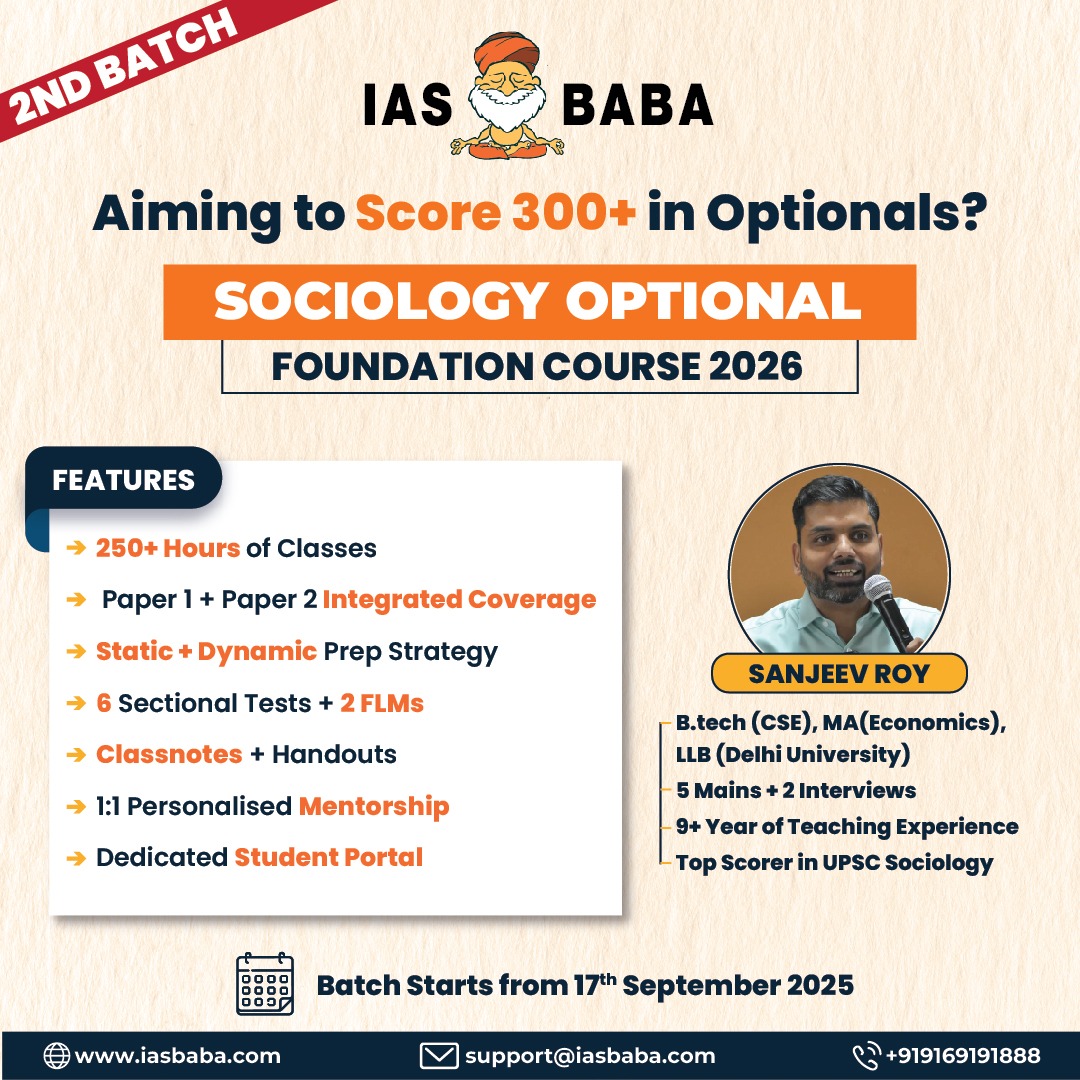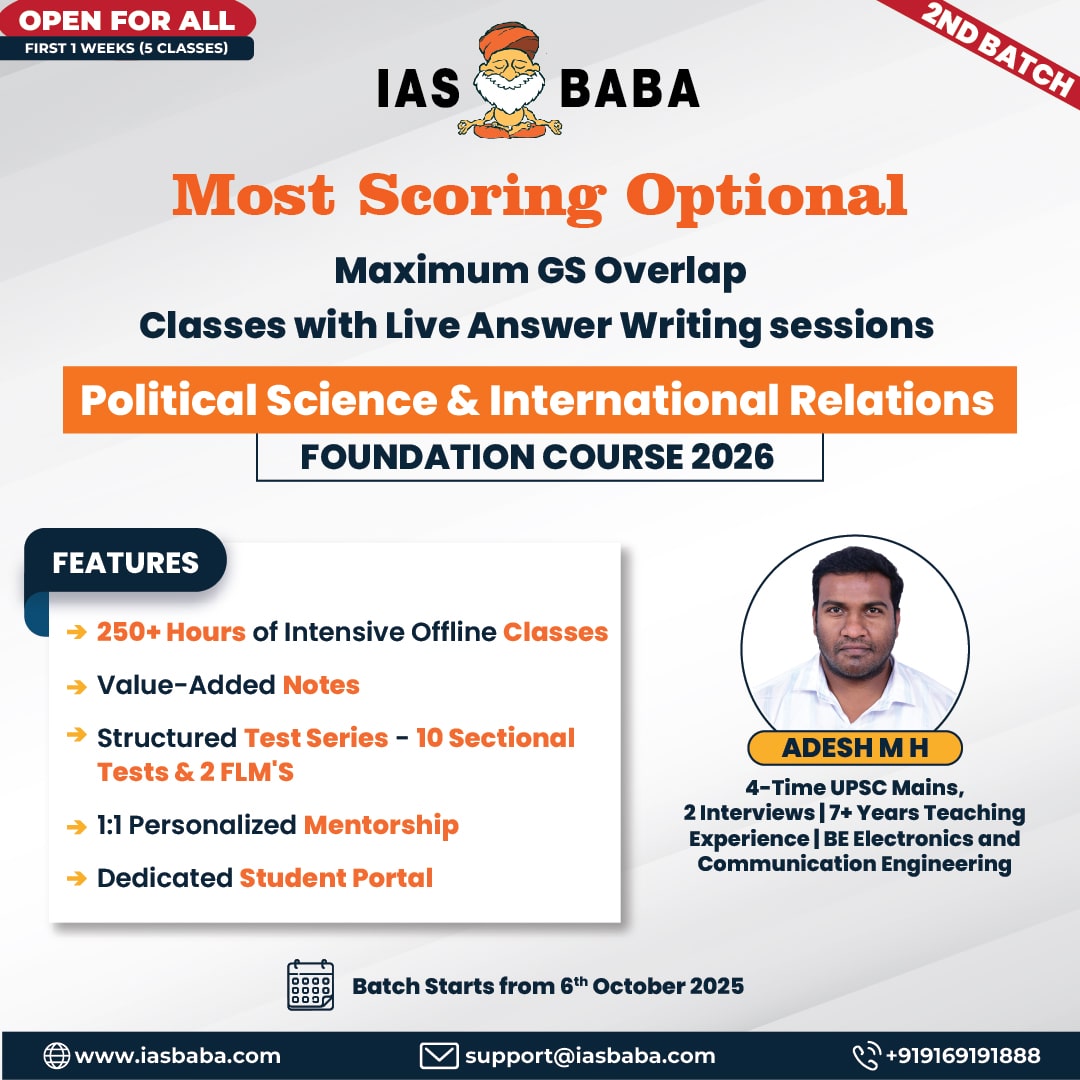IASbaba Daily Prelims Quiz
For Previous Daily Quiz (ARCHIVES) – CLICK HERE
The Current Affairs questions are based on sources like ‘The Hindu’, ‘Indian Express’ and ‘PIB’, which are very important sources for UPSC Prelims Exam. The questions are focused on both the concepts and facts. The topics covered here are generally different from what is being covered under ‘Daily Current Affairs/Daily News Analysis (DNA) and Daily Static Quiz’ to avoid duplication. The questions would be published from Monday to Saturday before 2 PM. One should not spend more than 10 minutes on this initiative.
Gear up and Make the Best Use of this initiative.
Do remember that, “the difference between Ordinary and EXTRA-Ordinary is PRACTICE!!”
Important Note:
- Don’t forget to post your marks in the comment section. Also, let us know if you enjoyed today’s test 🙂
- After completing the 5 questions, click on ‘View Questions’ to check your score, time taken, and solutions.
Test-summary
0 of 5 questions completed
Questions:
- 1
- 2
- 3
- 4
- 5
Information
To view Solutions, follow these instructions:
- Click on – ‘Start Test’ button
- Solve Questions
- Click on ‘Test Summary’ button
- Click on ‘Finish Test’ button
- Now click on ‘View Questions’ button – here you will see solutions and links.
You have already completed the test before. Hence you can not start it again.
Test is loading...
You must sign in or sign up to start the test.
You have to finish following test, to start this test:
Results
0 of 5 questions answered correctly
Your time:
Time has elapsed
You have scored 0 points out of 0 points, (0)
| Average score |
|
| Your score |
|
Categories
- Not categorized 0%
| Pos. | Name | Entered on | Points | Result |
|---|---|---|---|---|
| Table is loading | ||||
| No data available | ||||
- 1
- 2
- 3
- 4
- 5
- Answered
- Review
-
Question 1 of 5
1. Question
Consider the following statements regarding the Self-Respect Movement (1925):
-
The movement viewed caste hierarchy not merely as a social evil but as a structural mechanism of power sustained by religion and tradition.
-
Its advocacy of Self-Respect Marriages represented a critique of both patriarchy and priestly authority in Hindu society.
-
While drawing strength from the Justice Party, the movement also exposed the limitations of elite-driven non-Brahmin politics in addressing the concerns of marginalized communities.
Which of the statements given above is/are correct?
Correct
Answer: (d)
Explanation:
- Statement 1: The Self-Respect Movement’s critique was not limited to social reform; it saw caste as a system of domination legitimized by religion and cultural norms. Hence the statement is Correct
- Statement 2: Self-Respect Marriages rejected rituals, priests, and patriarchal control, symbolizing both gender emancipation and anti-Brahminical assertion. Hence the statement is Correct
Statement 3: Though allied with the Justice Party, the movement revealed tensions within non-Brahmin politics, especially its elite bias that failed to fully incorporate Dalit and lower non-Brahmin aspirations. Hence the statement is Correct
Incorrect
Answer: (d)
Explanation:
- Statement 1: The Self-Respect Movement’s critique was not limited to social reform; it saw caste as a system of domination legitimized by religion and cultural norms. Hence the statement is Correct
- Statement 2: Self-Respect Marriages rejected rituals, priests, and patriarchal control, symbolizing both gender emancipation and anti-Brahminical assertion. Hence the statement is Correct
Statement 3: Though allied with the Justice Party, the movement revealed tensions within non-Brahmin politics, especially its elite bias that failed to fully incorporate Dalit and lower non-Brahmin aspirations. Hence the statement is Correct
-
-
Question 2 of 5
2. Question
The principle of “Common but Differentiated Responsibility (CBDR)”, often invoked by India in WTO negotiations, primarily relates to:
Correct
Answer: (b)
Explanation:
- CBDR means all countries share responsibility for global trade obligations, but developing nations get flexibility due to historical disadvantages and capacity constraints.
- This forms the basis of Special and Differential Treatment (S&DT) in WTO.
Incorrect
Answer: (b)
Explanation:
- CBDR means all countries share responsibility for global trade obligations, but developing nations get flexibility due to historical disadvantages and capacity constraints.
- This forms the basis of Special and Differential Treatment (S&DT) in WTO.
-
Question 3 of 5
3. Question
Consider the following statements about Dr. Bhupen Hazarika:
-
His iconic song Bistirna Parore used the Brahmaputra as a metaphor for human struggle and social justice, drawing inspiration from the African-American spiritual Ol’ Man River.
-
He was awarded the Dadasaheb Phalke Award for his contribution to Indian cinema, and posthumously conferred the Bharat Ratna.
Which of the statements given above is/are correct?
Correct
Answer: (c)
Explanation:
- Statement 1: Bistirna Parore transformed the Brahmaputra into a symbol of resilience and justice, inspired by Ol’ Man River. Hence the statement is Correct
Statement 2: He received the Dadasaheb Phalke Award (1992) and was posthumously awarded Bharat Ratna (2019). Hence the statement is Correct
Incorrect
Answer: (c)
Explanation:
- Statement 1: Bistirna Parore transformed the Brahmaputra into a symbol of resilience and justice, inspired by Ol’ Man River. Hence the statement is Correct
Statement 2: He received the Dadasaheb Phalke Award (1992) and was posthumously awarded Bharat Ratna (2019). Hence the statement is Correct
-
-
Question 4 of 5
4. Question
With reference to the philosophy and reforms of Sree Narayana Guru, consider the following statements:
-
His dictum “One Caste, One Religion, One God for Man” emphasized social equality and universal spiritual humanism.
-
He rejected the role of education in social mobility, focusing only on spiritual upliftment.
-
He blended Advaita Vedanta with social reform, making spirituality a tool for equality and justice.
How many of the above statements are correct?
Correct
Answer: (b)
Explanation:
- Statement 1: His message aimed at transcending caste and sectarian divisions, promoting universal brotherhood. Hence the statement is Correct
- Statement 2: He considered education central to empowerment, establishing schools and libraries through SNDP Yogam. Hence the statement is Incorrect
Statement 3: His reformist approach fused Advaita philosophy with practical social reform, ensuring spirituality became a means for justice. Hence the statement is Correct
Incorrect
Answer: (b)
Explanation:
- Statement 1: His message aimed at transcending caste and sectarian divisions, promoting universal brotherhood. Hence the statement is Correct
- Statement 2: He considered education central to empowerment, establishing schools and libraries through SNDP Yogam. Hence the statement is Incorrect
Statement 3: His reformist approach fused Advaita philosophy with practical social reform, ensuring spirituality became a means for justice. Hence the statement is Correct
-
-
Question 5 of 5
5. Question
Which of the following transactions are invisibles in the BoP?
-
Export of engineering goods
-
Remittances from NRIs
-
IT services exported abroad
-
Portfolio investment inflow
Which of the options given above is/are correct?
Correct
Answer: (b)
Explanation:
- Invisibles = services, income, and transfers.
- Remittances (transfers) → Invisible
- IT services (services export) → Invisible
- Goods export → Visible
- Portfolio investment → Capital Account (not part of invisibles)
Incorrect
Answer: (b)
Explanation:
- Invisibles = services, income, and transfers.
- Remittances (transfers) → Invisible
- IT services (services export) → Invisible
- Goods export → Visible
- Portfolio investment → Capital Account (not part of invisibles)
-
- Current Affairs Quiz, IAS Daily Current Affairs Quiz, IAS UPSC Current Affairs Quiz, IAS UPSC Prelims Quiz, IASbaba's Current Affairs Prelims Quiz, IASbaba's Daily Quiz, IASbaba's UPSC Quiz, Prelims Current Affairs Quiz, UPSC Current Affairs Quiz, UPSC Current Affairs Quiz IASbaba, UPSC Daily Current Affair Quiz, UPSC IAS Daily Quiz
